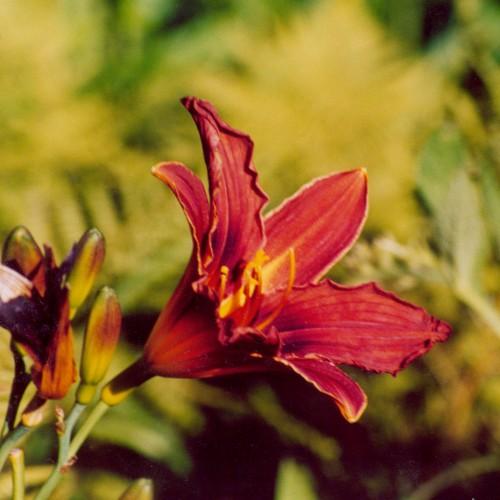
daylily
Hemerocallis 'Lamplighter's Circle'
Cycle:
Herbaceous Perennial
Watering:
Average
Hardiness Zone:
3 - 9
Flowers:
Flowers
Sun:
Full sun,part shade
Leaf:
Yes
Growth Rate:
High
Maintenance:
Low
Drought Tolerant:
Yes
Salt Tolerant:
Yes
Care Level:
Medium
watering
Daylily (Hemerocallis 'Lamplighter's Circle') is a low maintenance plant species that requires minimal watering. It thrives best in dry conditions, so err on the side of caution when watering these plants, as over-watering can be catastrophic. Water your daylilies deeply and slowly about once a week. Make sure that you are giving the soil a good soaking and wait until the soil is dry before watering them again. During the summer, however, they may need to be watered more often to prevent them from drying out. It is important to note that daylilies don't need regular fertilizer applications. If needed, a general-purpose diluted fertilizer can be used twice a year - once in the early spring and again in the late summer.
sunlight
Daylily (Hemerocallis 'Lamplighter's Circle') requires full sun in order to thrive and bloom in the summer months. It should be planted in a location that allows at least 6 to 8 hours of direct sunlight per day during the growing season. The daylily may also benefit from some light shade during the hottest part of the day.
pruning
Pruning is an important part of maintaining a healthy Daylily plant. Hemerocallis 'Lamplighter's Circle' respond best to pruning in the spring after the plant has reached a minimum of 24 inches in height. Use a pair of bypass pruners and cut the foliage back to about 12 inches. In addition, cut off any spent or dead flower stalks as low to the ground as possible. It is important to note that pruning should be done sparingly. By removing healthy foliage, you may reduce the blooms of the next flowering season. Depending on the health of the plant, a light pruning may be done yearly in the spring to maintain size and shape.
